The state of Georgia has beautiful scenery and landscapes, as well as several historic landmarks, exhibits and recreational activities to enjoy. Although there are no official national parks in Georgia, this historically rich state has 11 national park sites, including a national military park, battlefield park, monument and historic site.
These important Georgia national park sites are intriguing to explore, from the sandy beaches on Cumberland Island to the historic Civil War battlegrounds at Kennesaw Mountain National Battlefield Park. Check them out here.
Contents
- National Parks In Georgia
- 11 National Park Sites In Georgia
- 1- Andersonville National Historic Site
- 2- Chattahoochee River National Recreation Area
- 3- Chickamauga & Chattanooga National Military Park
- 4- Cumberland Island National Seashore
- 5- Fort Frederica National Monument
- 6- Fort Pulaski National Monument
- 7- Jimmy Carter National Historic Park
- 8- Kennesaw Mountain National Battlefield Park
- 9- Martin Luther King, Jr. National Historic Site
- 10- Ocmulgee Mounds National Historical Park
- 11- Appalachian National Scenic Trail
- 11 National Park Sites In Georgia
National Parks In Georgia
11 National Park Sites In Georgia
1- Andersonville National Historic Site
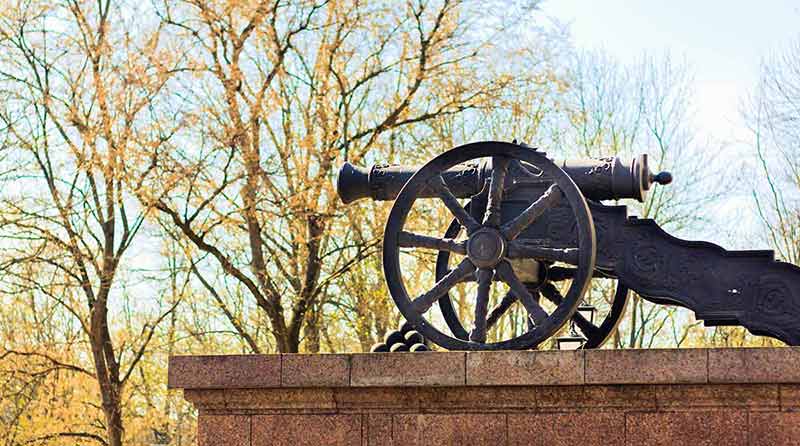
Formerly known as Camp Sumter military prison, Andersonville National Historic Site preserves the site of one of the largest Confederate prisons used during the Civil War.
The prison, which operated from February 1864 to April 1865, is known for the appalling conditions in which inmates were held for 14 months.
Around 45,000 Union prisoners were imprisoned, with 13,000 of them dying.
In addition to the former prison, the 514 acres (208 ha) park includes the National Prisoner of War Museum and Andersonville National Cemetery.
Things To Do In The Park
The National Prisoner of War Museum also serves as a visitor centre that provides an overview of the Civil War prison camp and the experiences of American prisoners of war throughout history.
Visitors can also check out Camp Sumter, where 45,000 Civil War prisoners were held, and the Andersonville National Cemetery, which serves as a resting place for prisoners who died during the war and veterans of the United States Armed Forces since the Civil War.
How To Get To The Park
Andersonville National Historic Site is in Andersonville, 12 miles (19 km) north of Americus and 11 miles (18 km) south of Montezuma on GA-49.
2- Chattahoochee River National Recreation Area
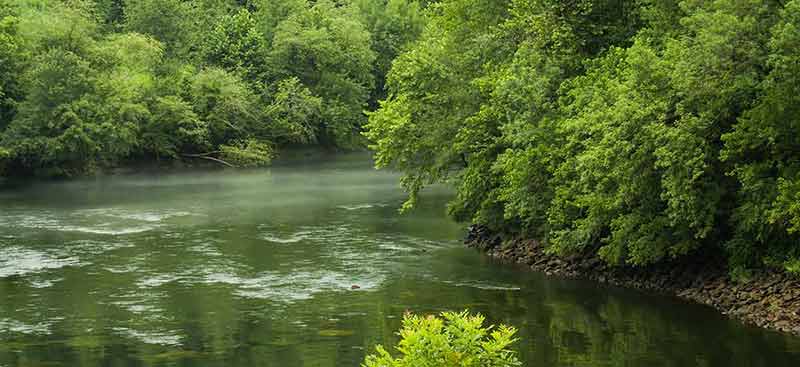
The Chattahoochee River National Recreation Area, located in Northern Georgia, protects several sites along the Chattahoochee River.
Established in 1978, the park provides several recreation activities along the 48-mile (77-km) stretch of the Chattahoochee River.
In 2012, the Chattahoochee River Water Trail was established, making the Chattahoochee National Recreation Area the first river to be designated as a National Water Trail.
Things To Do In The Park
The park offers excellent trout fishing as well as several other species of game fish.
Biking is another popular form of recreation in and around the park, with over 7 miles (11 km) of bike trails currently available.
The park also has some of the best outdoor activities, such as boating, canoeing, rafting, and kayaking.
How To Get To The Park
The park headquarters and visitor centre are located in Sandy Springs, Georgia, in the Island Ford Unit of the park.
3- Chickamauga & Chattanooga National Military Park
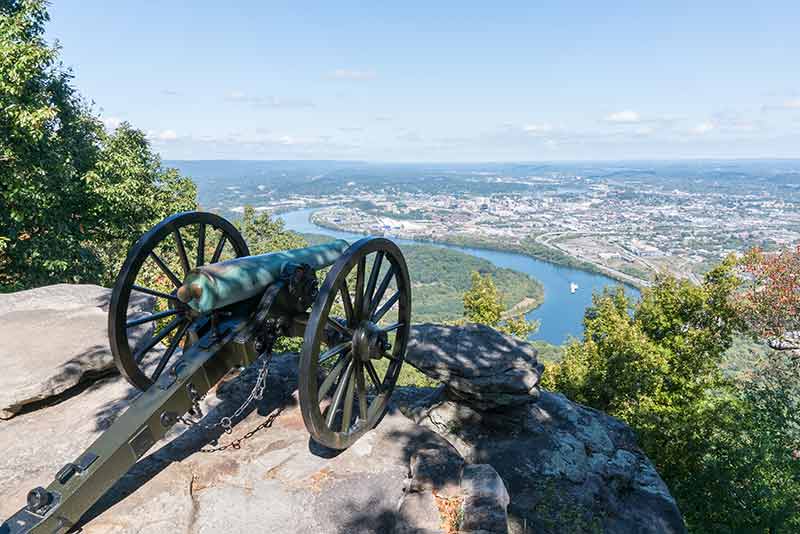
Chickamauga and Chattanooga National Military Park straddles northern Georgia and southeastern Tennessee. It’s a must-see for history buffs visiting Georgia.
The 9,523 acres (3,854 ha) park, which was established in 1890 as the first National Military Park in the United States, contains numerous monuments and exhibits from the Civil War era.
The famous Battle of Chickamauga and Siege of Chattanooga, two major battles of the American Civil War fought in 1863, are both preserved in the park.
During its early years, the park was managed by the War Department and served as a military research facility as well as a memorial.
The National Park Service took over the management of the site in 1933.
Things To Do In The Park
Visitors can enjoy rock climbing at two locations: Sunset Rock on Lookout Mountain’s western bluff and Eagles Nest on the mountain’s northern lower slope.
West Chickamauga Creek and Lookout Creek are two creeks within the park where visitors can go paddling.
The Chickamauga Battlefield has approximately 50 miles (80 km) of hiking trails and biking is also allowed on paved roads in the park, but only on a few trails.
How To Get To The Park
Take exit 350 off I-75 to get on Battlefield Parkway (GA HWY 2). Take Hwy 2 until you reach the intersection of Battlefield Parkway and Lafayette Road, then turn left onto Lafayette Road and travel for about a mile (1.6 km). The visitor centre is on the right.
4- Cumberland Island National Seashore
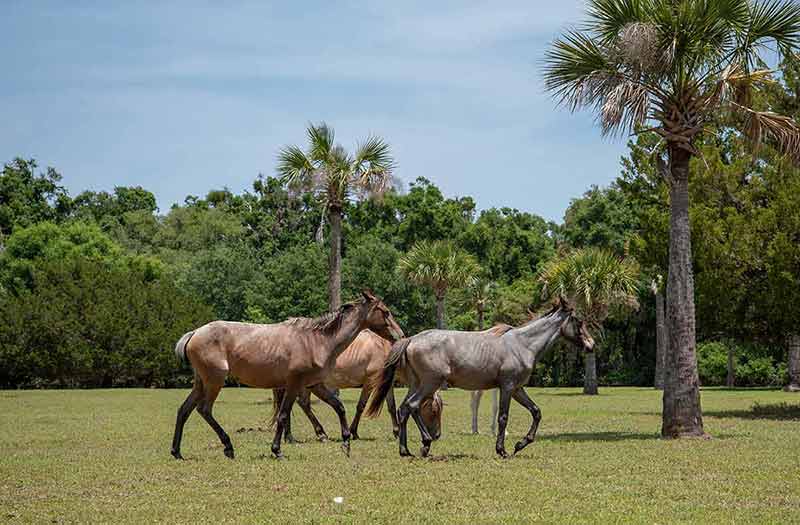
Cumberland Island National Seashore protects the majority of Cumberland Island, Georgia’s largest barrier island located in St. Mary’s, Georgia.
The park covers 36,415 acres (14,737 ha) and was established in 1972.
It has beaches and dunes, marshes, freshwater lakes and amazing wildlife.
The wild horses that roam the seashore are a must-see for anyone visiting Cumberland Island.
Many historic districts are also preserved and interpreted by the national seashore, including the High Point-Half Moon Bluff Historic District, which was added to the National Register of Historic Places in 1978.
Things To Do In The Park
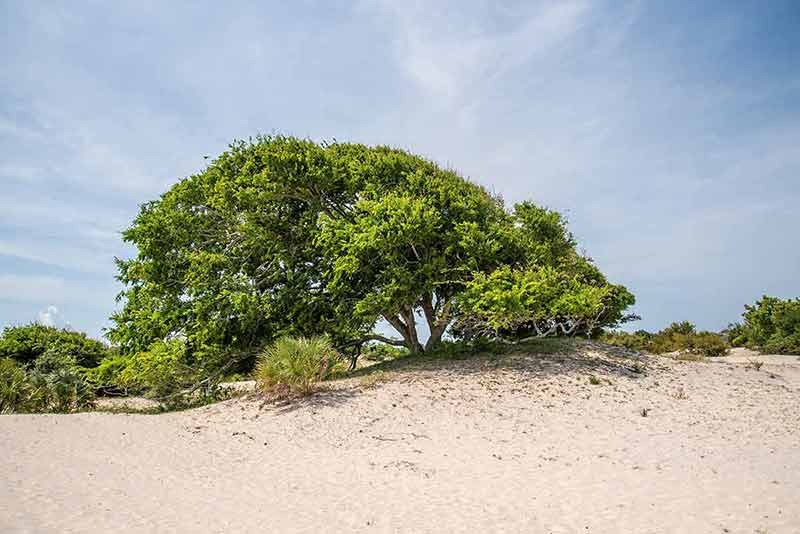
Swimming is a popular activity for both day visitors and campers, as there are 17.5 miles (28.2 km) of undeveloped beaches on Cumberland Island.
More than 50 miles (80 km) of hiking trails and roads lead through maritime forests, wetlands, historic districts, marshes, and beautiful beaches. Camping is also a popular activity on Cumberland Island.
How To Get To The Park
Cumberland Island can only be reached by ferry or private boat. The Cumberland Island Visitor Center, Cumberland Island Museum, and the Lang concession ferry to the island are all located in St. Marys, Georgia.
5- Fort Frederica National Monument
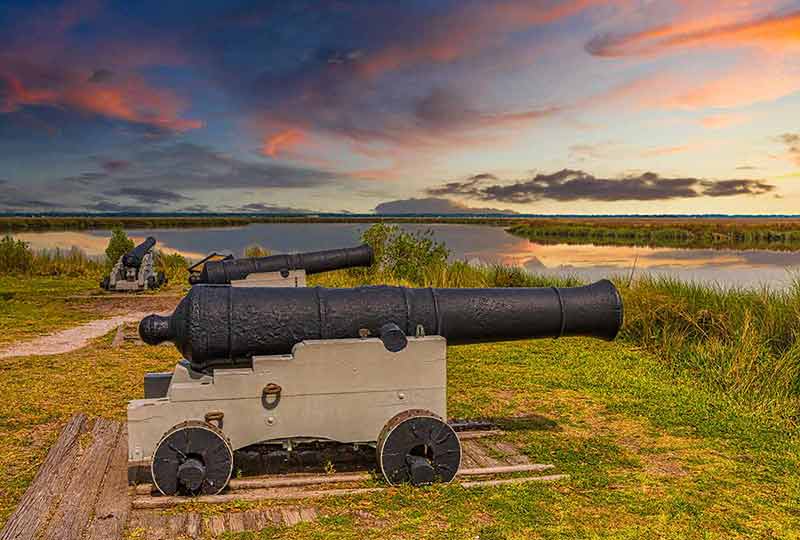
Fort Frederica National Monument is in southeastern Georgia, about 75 miles (121 km) south of Savannah.
This national monument protects the archaeological remains of a 16th-century fort and town built by James Oglethorpe.
In 1742, the Spanish and British fought for control of what is now Georgia on St. Simons Island, and the Fort was built to protect the British colony of Georgia’s southern border from Spanish attacks.
The battle ended with a British victory over the Spanish, allowing the British to keep control of the Georgia colony.
Fort Frederica National Monument was established in 1936 and covers 284.49 acres (115.13 ha).
Since 1993, the fort, which is now in ruins, has been used to educate visitors about the science of archaeology.
Things To Do In The Park
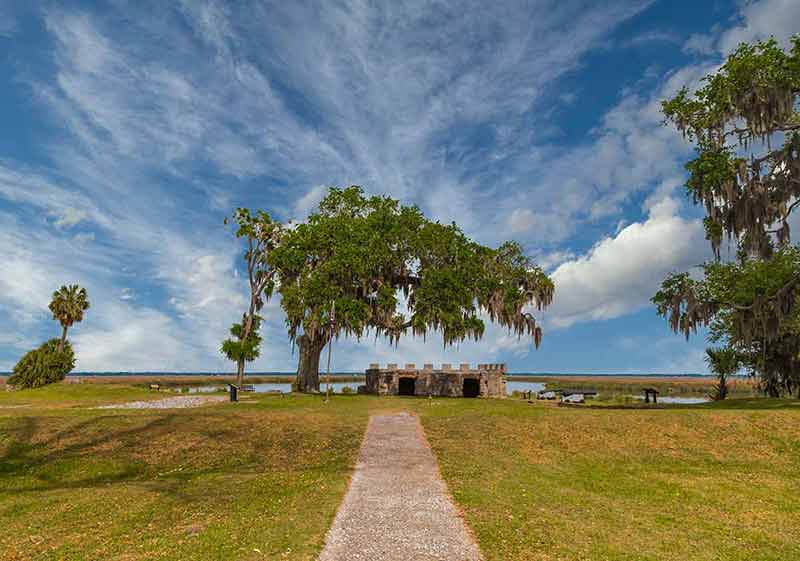
Visitors to the park can explore and enjoy thousands of archaeological remains or join a walking tour of the town led by a staff member.
At the visitor centre’s theatre, you can watch a short film and examine artifacts and exhibits in the museum.
The park’s store is also located in the visitor centre and sells books, educational games and crafts.
How To Get To The Park
Saint Simons Island provides access to Fort Frederica. Turn left at the traffic light at Mallery St and Kings Way. Follow Kings Way to a traffic light. Take the first right onto Frederica Road. Take the second exit at the large traffic circle and continue on Frederica Road. Follow Frederica to a small traffic circle. Continue on Frederica for approximately 1 mile (1.6km) to the park’s entrance, which is on the left across the street from Wesley United Methodist Church.
6- Fort Pulaski National Monument
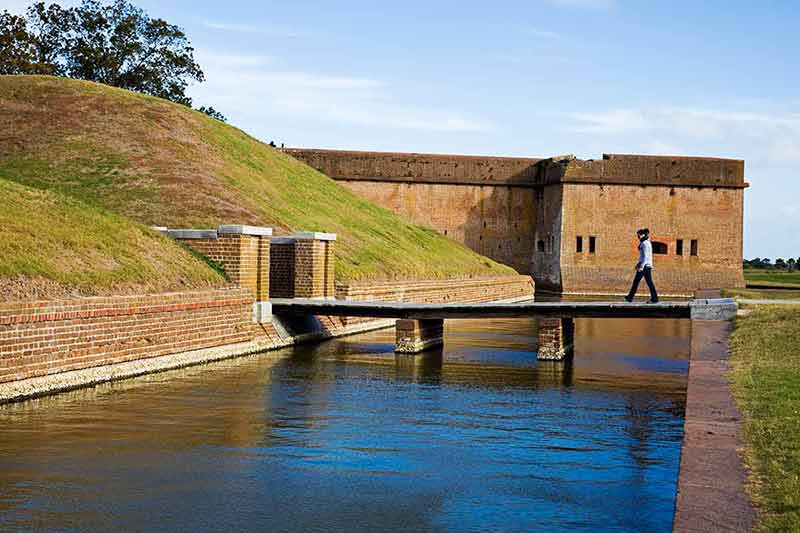
Fort Pulaski National Monument is on Cockspur Island, Georgia, between Savannah and Tybee Island.
The National Monument encompasses most of Cockspur Island, where the fort is located, and all of McQueens Island, totalling 260 acres (105.2 ha).
This fort was an important part of the Civil War, and its use changed several times.
It was the site of a war that lasted 30 days and later became a haven for former slaves and a residence for both Union and Confederate soldiers.
Today, Fort Pulaski National Monument is a popular national park in Georgia, allowing visitors to witness the significant evolution of military architecture and technology in the 19th century.
Things To Do In The Park
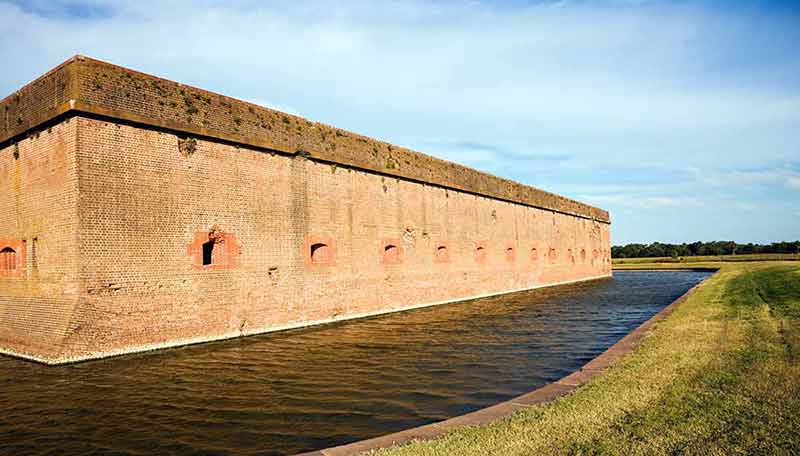
Fishing is a popular activity for visitors to this park, allowed along the banks of the Savannah River and around Cockspur Island.
Several nature trails wind through beautiful landscapes and historic remnants throughout Fort Pulaski National Monument.
Other outdoor activities available at the park include biking, bird watching, and picnicking.
How To Get To The Park
Turn left onto Ocean Highway, then right onto Ogeechee Rd (US-17 N, US-80 East). Make a U-turn onto West Victory Drive (US-80 East). Continue east on US-80 for another 13 miles (21 km). The Fort Pulaski National Monument entrance will be on the left side of US-80, just after a turn on the highway.
7- Jimmy Carter National Historic Park
The park preserves sites associated with Jimmy Carter, the 39th President of the United States and the only US President who calls Georgia home.
It was established in 1987 as Jimmy Carter National Historic Site and renamed as a national historical park in 2021.
The sites of this 71 acres (29 ha) park include Jimmy Carter’s residence, boyhood farm, school (which serves as the Park Museum and Visitor Center), and the town’s railroad depot used as his campaign headquarters during the 1976 election.
The area surrounding President Carter’s home is guarded by the US Secret Service and is not open to the public because he continues to live in Plains.
Things To Do In The Park
A restored classroom, principal’s office, and auditorium at Plains High School allow visitors to view education as it was during Carter’s time there.
From 1928 to 1949, Jimmy’s father, Earl Carter, owned the Boyhood Farm, where he primarily grew corn, cotton, sugar cane, and peanuts.
There are wayside exhibits and audio stations along the walking path where visitors can listen to Jimmy Carter tell stories from his childhood.
The Plains Depot, built in 1888, is the city’s oldest building and was used as the headquarters for Jimmy Carter’s presidential campaign in 1976.
How To Get To The Park
Take I-85 South from Atlanta and exit at exit 21 to I-185 South (GA-411 S, Chet Atkins Pkwy). Continue on I-185 S (GA-411 S, Chet Atkins Pkwy) and take the exit 1A to US-27 S (US-280 E, GA-520 E).
Jimmy Carter National Historical Park is located in Plains, Georgia, approximately 90 miles (145 km) southwest of Macon.
8- Kennesaw Mountain National Battlefield Park
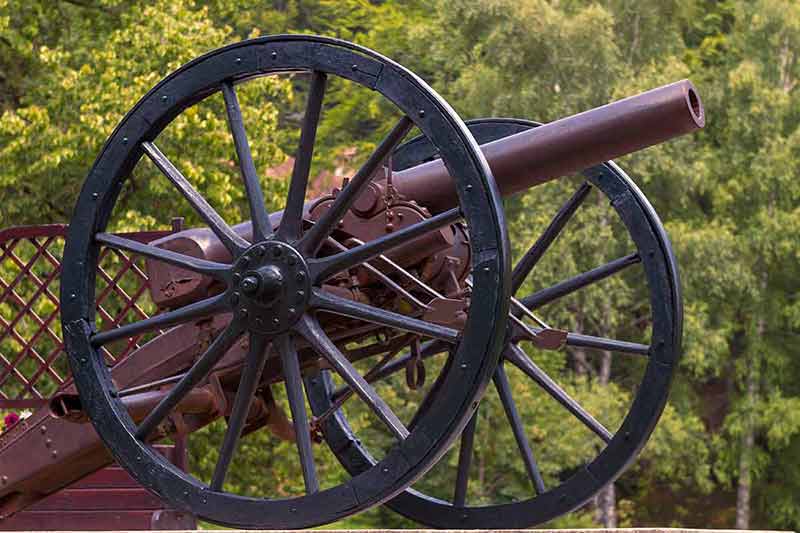
Kennesaw Mountain, near Atlanta, Georgia, is a 2,923-acre (1,182.9-ha) National Battlefield that preserves a Civil War battleground.
The park was the site of a key battle during the Atlanta campaign.
Designated as a national park site in 1917, Kennesaw Mountain and the surrounding area were the site of the Battle of Kennesaw Mountain, fought between Union and Confederate soldiers in 1864.
This national park near Atlanta serves as an important historical reminder of Georgia’s past while also providing visitors with breathtaking natural surroundings.
Things To Do In The Park
Kennesaw Mountain National Battlefield Park has more than 22 miles (35 km) of well-maintained interpretive trails for learning and hiking.
Rangers and volunteers reenact history for visitors with artillery fire, field medicine tents, infantry volleys, and cooking demonstrations.
The park was designated a globally Important Bird Area in 2000, as it is a prime natural migration habitat for neotropical migrants such as vireos and warblers.
How To Get To The Park
The park is accessible via I-75 South and I-575 North. Take exit 269 (Barrett Parkway) and exit 1 (Barrett Parkway) from these two roads. Turn left at the stoplight onto Barrett Parkway. After approximately 3.5 miles (5.6 km), turn left at the light onto Old Highway 41. Turn right at the next light, Stilesboro Rd. The visitor centre is located on the left.
9- Martin Luther King, Jr. National Historic Site
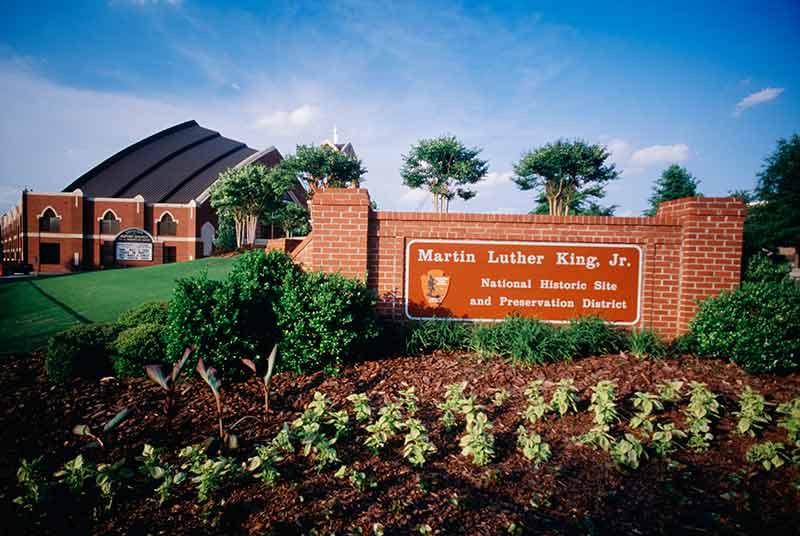
The Martin Luther King Jr. National Historical Park is a 35-acre (14-ha) park in Atlanta, Georgia that commemorates the life, works, and achievements of Martin Luther King Jr., one of the most important Georgians in the state’s history.
Within the park is Martin Luther King’s childhood home, restored as a museum that offers a glimpse into King’s childhood.
The park also contains Ebeneezer Baptist Church, where King was baptized and later became a co-pastor with his father.
Other significant places in the park include the King Center, founded by King’s wife, Coretta Scott King, to preserve her husband’s legacy, and the World Peace Rose Garden, an artistic interpretation of Dr Martin Luther King, Jr.’s life and work.
Things To Do In The Park

One of the park’s highlights is visiting the well-preserved boyhood home of Martin Luther King, Jr where King spent the first 12 years of his life.
Dr Martin Luther King’s father served as a pastor at the historic Ebenezer Baptist Church.
It was here that King was baptized and later served as co-pastor. The church also served as the location for King’s funeral.
How To Get To The Park
The park is accessible by car and public transportation.
10- Ocmulgee Mounds National Historical Park
Located near Macon, Georgia, Ocmulgee Mounds National Historical Park (formerly Ocmulgee National Monument) preserves the culture of the Native Ocmulgee people.
The 3,336-acre (1,350-ha) park on the east bank of the Ocmulgee River, established in 1936, contains ceremonial mounds built by the South Appalachian Mississippian culture before 1000 CE.
Over the centuries, many different Native American cultures have called this place home.
The Great Temple Mound Complex, which includes the park’s two tallest mounds, is where the village chief would have lived during the Mississippian Period.
This was also the site of one of the most significant archaeological digs in American history, resulting in the discovery of millions of artifacts.
Things To Do In The Park
Ocmulgee Mounds National Historical Park features 8 miles (23 km) of peaceful trails that lead to seven historical mounds and the park’s beautiful natural surroundings.
Visitors can also check out the visitor’s centre, where they can learn about the lives of the various native people who once lived here through film, exhibits, and ancient artifacts.
How To Get To The Park
After arriving in Macon via I-75, take I-75 east to I-16 east (left exit). Exit I-16 at Exit 2 (Coliseum Drive), turn left under the highway and follow Coliseum Dr. until it ends at Emery Highway. Turn right at the third light on Emery Highway. The park’s entrance is on the right side of the road.
11- Appalachian National Scenic Trail
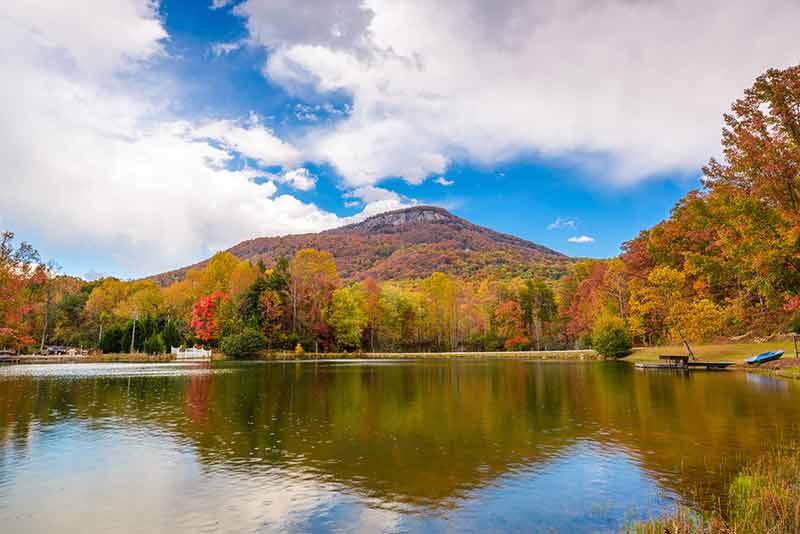
The Appalachian Trail begins in Springer Mountain in northern Georgia and runs 2,200 miles (3,540 km) through 14 states to Mount Katahdin in Maine.
Over three million people hike sections of the trail each year, with thru-hikers completing the entire trail in a single season.
The 78-mile (126-km) section of the trail in Georgia is one of the most scenic.
The trail’s southern end is at the summit of Springer Mountain, from which it meanders through North Georgia’s Blue Ridge Mountains, offering hikes of varying difficulty and breathtaking views.
Hikers who want to hike the trail all the way often choose to start their journey in Georgia.
This section is also popular with section hikers, day hikers, scouts, spring breakers, and a variety of other people.
As a result, it is one of the trail’s most heavily travelled sections.
How To Get To The Park
You can reach the Appalachian Trail by car, train, bus, or plane from a variety of locations. The Georgia section of the trail is accessible via Springer Mountain, near Amicalola Falls State Park.
If you love exploring national parks, you might like to read:
- Wyoming National Parks Guide
- Nevada National Parks Guide
- Michigan National Parks Guide
- 5 Maine National Parks
- New Hampshire National Parks Guide
- 25 National Parks in Canada
- 17 National Parks in Argentina
- Tasmania National Parks
- 20 National Parks in Mexico
- 18 New Mexico National Parks
- 18 National Parks in Massachusetts
- 17 Colorado National Parks
- 4 Indiana National Parks
- 5 Nebraska National Parks
- 30 Virginia National Parks
- 9 New Jersey National Parks
- 8 National Parks in Arkansas
- 8 Alaska National Parks
- 13 Tennessee National Parks
- 6 National Parks in Louisiana
- 5 Illinois National Parks
- 7 National Parks in Oklahoma
- 7 National Parks in South Dakota
- 12 Alabama National Parks
- 5 North Dakota National Parks
- 8 National Parks in West Virginia
- 20 National Parks in Arizona
- 11 National Parks In Florida
- 8 Hawaii National Parks
- 6 National Parks In Idaho
- Texas National Parks Guide
- 9 California National Parks
- 11 National Parks In Georgia
- 7 National Parks In Missouri
- 5 National Parks in Minnesota
- 7 National Parks In Kentucky
- 8 National Parks In Montana
- 15 National Parks In Washington State
- 8 South Carolina National Parks
- 12 North Carolina National Parks
- 4 Wisconsin National Parks
- 20 National Parks In India
- 11 Oregon National Parks
- 5 Connecticut National Parks
- 27 National Parks In New York State
- 4 Iowa National Parks
- Yosemite National Park
- Zion National Park
- 21 National Parks in Pennsylvania
- 9 National Parks in Mississippi
- 5 National Parks in Rhode Island
- 9 National Parks in Taiwan
- 20 East Coast National Parks
- Guide To Winter in Yellowstone National Park
Plan Your Trip

Rent A Car – Find the best car rental rates at Discover Cars. They compare car hire companies to provide you with the best deal right now.

Find A Hotel – If you’re curious about this article and are looking for somewhere to stay, take a look at these amazing hotels.





